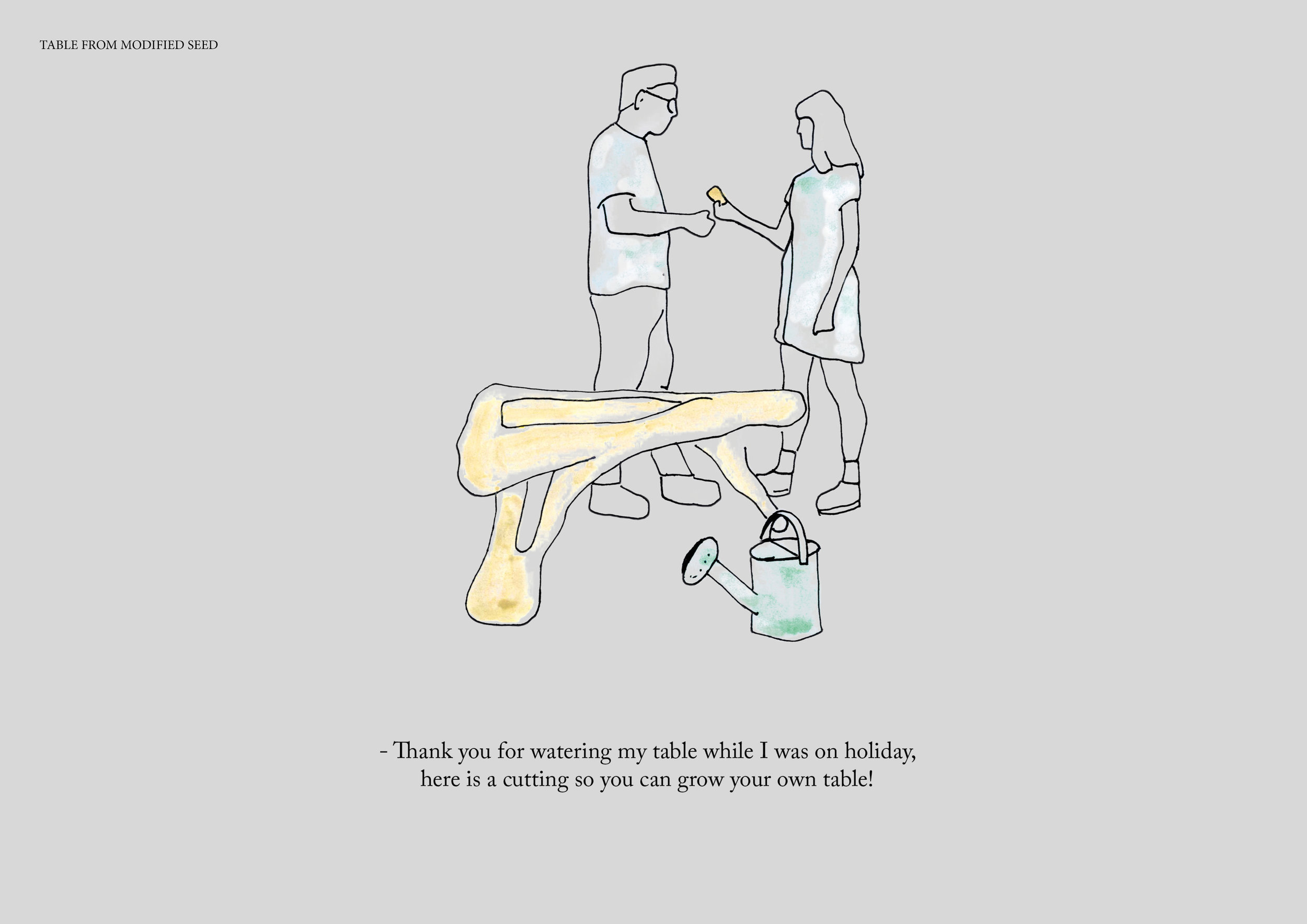BIOSYNTHETIC POSSESSIONS
WITH SYNTHETIC BIOLOGY, our possessions are a part of nature
In the year 2030, on the brink of ecological collapse, when overconsumption threatened the human existence, factories were hastily shut down to give some breathing room to the planet.
To reconcile our lifestyle with the ecosystem, only biological and digital goods were allowed on the market. This led to a global surge in research on synthetic biology, and soon, we could modify organisms to grow into any shape or function. Matching the products of the old world.
A table can now be grown from a genetically modified seed. It requires care and attention to live and prosper, but in return, it repairs itself and can multiply and spread.
The teddy bear that your child treated as if it was alive, now is. Growing with the child, getting bigger as the child gets older.
Bioluminescent fungi fill replace lamps in the lack of electricity.
--
GM crops are already being patented, transforming a species into intellectual property and a commodity. In this scenario, nature is being transformed into a possession, and our possessions are a part of nature. When the border between nature and product dissolves, how will the relation to our surroundings change?
If your products would be alive, would you suddenly value them differently? Would it ease some of the most unsustainable aspects of our consumer lifestyle? Or would the mindset travel in the opposite direction, with nature being regarded as something that could easily be replaced and recreated, losing it’s value. Would we get the same estranged relationship to nature as we have to products today?





